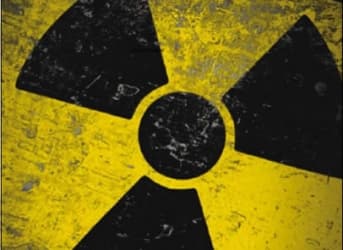India is betting heavily on nuclear power to meet its surging energy needs. While India currently has six nuclear power plants (NPPs) with 20 reactors generating 4,780 megawatts, seven other reactors are under construction and are expected to generate an additional 5,300 megawatts.
This current rate of nuclear power generation pales into insignificance with New Delhi’s future plans, as on 22 February Power Minister Sushilkumar Shinde told a seminar at the India International Nuclear Symposium, "India plans to have a total installed nuclear capacity of 63,000 megawatts by the year 2032, using both indigenous technology and imported reactors. Nuclear technology has several distinct advantages - it is compact and highly manageable in terms of handling, transportation and storage of the fuel. Thermal technologies have the problems of greenhouse gas emissions, fly-ash and handling, transportation, storage problems of large quantities of fuel as well as availability of coal."
As for worries about the hazards of nuclear power generation, earlier this month Atomic Energy Commission Chairman Srikumar Banerjee told a gathering at the Department of Atomic Energy’s Raja Ramanna Center for Advanced Technology in Indore, "All atomic energy plants in the country are totally secured as per international standards and are also capable of dealing with natural calamities like tsunamis or earthquakes."
But amidst the bland assurances lurks a darker reality.
After being in denial for years, last month the selfsame Department of Atomic Energy for the first time admitted that the deaths of its employees and their dependents at the Kalpakkam nuclear site were caused by multiple myeloma, a rare form of bone marrow cancer linked to nuclear radiation.
Not that the DAE willingly divulged the information – it came to light in response to a Right to Information (RTI) inquiry from October 2011, with the DAE acknowledging that nine people, including three employees working at the Madras Atomic Power Station (MAPS) at Kalpakkam, 44 miles from Chennai, died of multiple myeloma and bone cancer between 1995 and 2011. The DAE had previously stonewalled all previous requests for information.
The report paints a troubling picture of the policies at the DAE, which sends out high-ranking officials with bland assurances for the public about the nation’s NPPs while privately compiling reports about their health effects, concerns that can only grow as New Delhi presses forward with its nuclear program. Furthermore, the statements that Indian NPPs can withstand earthquakes and tsunamis, made in a country vulnerable to both, smacks of more than a little hubris, as Tokyo Electric and Power Co. made similar pronouncements before the 11 March 2011 earthquake and tsunami destroyed its Fukushima Daichi nuclear power complex.
But rising to the occasion, on 6 January the project director of the Kalpakkam Indira Gandhi Center for Atomic Research, Prabhat Kumar, asserted that the recent "Thane" storm proved without doubt the “foolproof safety, safe technology and design, concrete stability, and enviable worth of all nuclear power plants.”
But as for the Japanese following nuclear events in India, what can they conclude if “totally secured as per international standards” NPPs nevertheless caused cancer deaths from radiation? Given the immense releases of nuclear material from Fukushima, what will the country’s health profile look like decades from now?
Opposition to India’s nuclear power program is growing, most notably at Kudankulam. Accordingly, given the projected scope of India’s proposed nuclear future, the country may well prove to be either the salvation or graveyard of nuclear power worldwide.
And one can only wonder what other reports the DAE is sitting on. While no doubt all Indians without electricity would like a light bulb, is appeal is considerably diminished if its hanging over one’s hospital bed years from now as one slowly expires from radiation-induced cancer.
ADVERTISEMENT
Accordingly, the fishermen protesting the Kudankulam NPP could be doing their fellow countrymen a greater service than they currently realize.
By. John C.K. Daly of Oilprice.com



















Why is everybody so afraid of and against nuclear power? I just don't get it. Proof from real power plants in the real work the exists that this fukushima diaster didn't have to happen and doesn't have to happen in the future.
Without this evidence the article doesn't even rise to the level of junk science. But perhaps if there are fewer facilities providing nuclear energy, there will be more sales of inefficient and polluting biofuels? Did this occur to you Mr. Daly?
He wants DAE to trumpet this to every one to hear. Why ?
Is he aware of the fact that the Indian average death rate due to cancer is 95 per 100000 and the average among the employees of nuclear power is only 54 ?
Since the media does not even talk of these information, DAE has no reason to publicize the death of 9 people over a decade among the population of about 20000.
Regarding the Fukushima accident, how many have died of this accident ?
NONE !
Why don`t you rumor mongers share this information with the public ?
I have worked in Kalpakkam as a scientist. We have almost every other nuclear cycle activity going on there and everything is going smooth. There are absolutely no safety issues or any health hazards to anyone there.
The author says,
"Accordingly, the fishermen protesting the Kudankulam NPP could be doing their fellow countrymen a greater service than they currently realize."
So, he thinks the fishermen are protesting to save the world and the scientists are working in the nuclear plants along with their families to destroy the world.
What a wild imagination !
This is current situation in 2017 only, i think u judge very quickly.
SO NEVER JUDGE INDIANS.